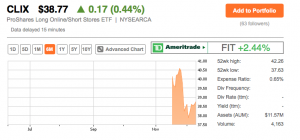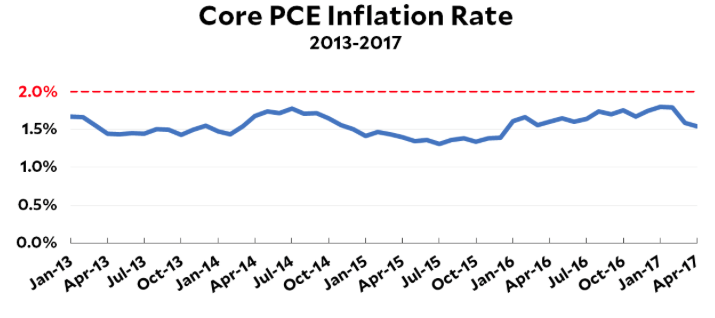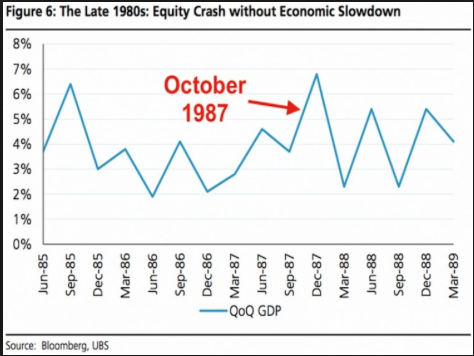ProShares has launched two retail disruption ETFs aptly named ProShares Decline of the Retail Store ETF EMTY and ProShares Long Online/Short Stores ETF CLIX. In order to fascilitate the movement of the ETFs, an index named Solactive-ProShares Bricks and Mortar Retail Store Index was created for correlating the ETFs. The index holds a diversified basket of 56 stocks, with none accounting for more than 1.79% of assets. In terms of categorical exposure, apparel takes the largest share at 28.6% followed by department stores at 10.7% and supermarkets at 5.3 percent (read: Online vs. Offline Retail: Recent ETF Winners).
So why did ProShares create these two new ETFs? It’s quite simple really. The company did so to capitalize on the seismic trend that has been collapsing the sales and gross margins of physical retail stores in favor of online or e-commerce sales. Over 8,000 retail store fronts will close in 2017 with many retailers like The Sports Authority and HHGregg being eliminated from the retail landscape completely.
eMarketer estimates that U.S. retail e-commerce sales will grow 15.8% in 2017 to reach $452.76 billion, making up 9.0% of total retail sales. Another firm Forrester projects U.S. online sales to grow 13% year over year in 2017, which is five times faster than the projected offline sales growth, and in line with the National Retail Federation’s estimates. It expects online sales to account for 17% of all U.S. retail sales by 2022, up from the projected 12.7% for 2017.
As it pertains to EMTY, this ETF specifically plays on the prevailing theme that online/e-commerce retailers will continue to eat into the business of brick and mortar retailers. EMTY offers daily short exposure to physical retail operators. To be included in the Solactive-ProShares Bricks and Mortar Retail Store Index, a retailer must be characterized as receiving at least 50% of its revenue from retail operations; receive 75% or more of its retail revenues from in-store sales; and be a U.S. company. In addition, a retailer must have a market capitalization of at least $500 million, a six-month daily average value traded of at least $1 million, and meet other requirements. The index is rebalanced monthly and reconstituted annually. Many of the retail operators you are likely familiar with fall into this category. Names like Macy’s (M), J.C. Penney (JCP), Kohl’s (KSS), Bed Bath & Beyond (BBBY) all generate more than 75% of their total sales from physical store sales.
What I don’t like about EMTY is that, within the holdings, the ETF shorts an equally weighted index and some of the retail operators within the index are quite healthy. The fund is an equal opportunity bricks and mortar retail short in this sense. While shorting “distressed” retail brands, the fund also shorts the likes of Wal-Mart (WMT) and Dollar General (DG), which are quite healthy operators. In summation, EMTY is constructed to benefit from the thesis that as physical retail operators struggle to compete with the proliferation of e-commerce sales, these retailers will suffer. As they suffer, shares of EMTY should appreciate in value over time.
CLIX is a bit different than EMTY. The ProShares Long Online/Short Stores ETF “combines a 100% long portfolio of online and non-traditional retailers with a 50% short position in bricks and mortar retailers.” The composition of the ETF outlines its leverage benefit. In a volatile sideways market, the fund could be expected to lose money. It also means that if the shift toward online sales and away from brick and mortar sales thesis is correct, it should easily outperform the market and benefit from the extra compounding of gains.
The short portion of CLIX holdings is the same as the holdings in EMTY. But the long portion of the fund includes the titans of the e-commerce world such as Amazon (AMZN), Groupon (GRPN), eBay (EBAY) and Alibaba (BABA). Amazon and Alibaba make up some 40% of the long exposure.


Both of these ETFs have only been trading for a few short weeks and doing so with extremely low volumes. This means there is not a lot of liquidity in the ETFs presently. As such, the bid/ask spreads are quite wide. With traditional retail stocks outperforming since the inception of these ETFs, they have also underperformed their general performance expectations and construct, which is to benefit from the long-term decline in physical retail operating sales performance. It remains to be seen whether or not investors eventually take advantage of these new ETFs in the manner that they have taken advantage of ProShares Volatility ETFs. What’s even more intriguing to me is whether or not these ETFs find themselves disadvantaged based on the presumption of the creation. What I mean by this is that the underlying thesis or genesis of CLIX and EMTY are that brick and mortar retailers will continue, in perpetuity, to express stresses on their business; they will not reach an equilibrium between physical store and e-commerce sales and therefore not exhibit growth in earnings and sales long-term. In my opinion that is a very limiting thesis that also negates the fact that it has taken some 20 years for e-commerce to constitute only 9% of total retail sales. Only 9 percent…after 20 years.









